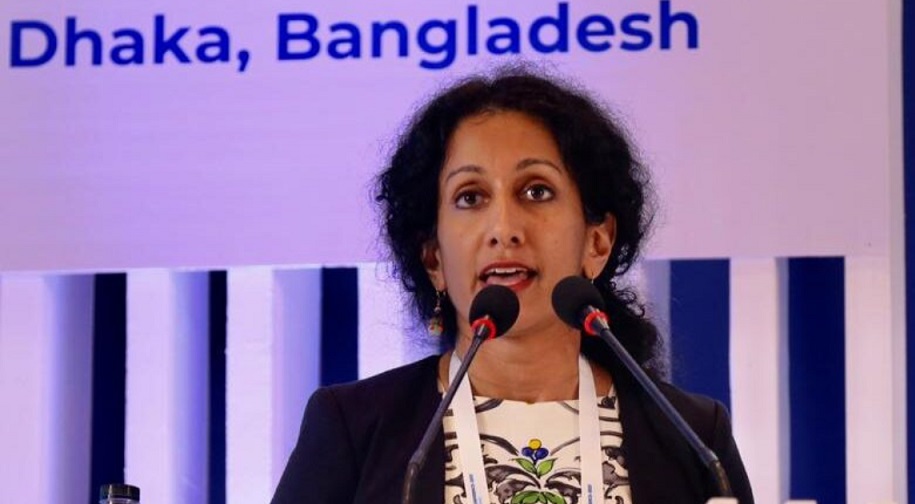Diplomatic correspondent
Published:2023-05-14 06:52:53 BdST
Indian Ocean ConferenceUS wants to see regional architecture solidify to realise potential of region
US Deputy Assistant Secretary of State Afreen Akhter on Saturday said the United States is committed to regional and multilateral efforts that help advance prosperity in the Indian Ocean Region.
"We want to see this regional architecture grow and solidify, because we believe it is absolutely necessary in realizing the potential of this region," she said while speaking at the 6th Indian Ocean Conference that ended on May 13.
As she heads back to Washington, Afreen said, she takes the perspectives with her, noting that "Your voices will guide our efforts to help build a prosperous, peaceful, free and open Indian Ocean Region."
Next month, the United States will attend the Indian Ocean Rim Association’s (IORA) Strategic Dialogue—where IORA Member States and Dialogue Partners will gather to discuss collaboration in the Indian Ocean Region.
"Collectively addressing the climate crisis will be a key priority for us as an IORA Dialogue Partner," Afreen said.
Afreen said in Bangladesh the United States is implementing a $17 million, program over five years that will expand Bangladesh’s access to affordable clean energy and support innovation in the clean energy economy.
In addition, the United States is working with the Maldives, Sri Lanka and partners across the Indian Ocean region to stop the flow of plastic pollution, develop climate smart agriculture and adapt to the effects of climate change.
The United States is also supporting resilience and prosperity in the Indian Ocean Region by responding to crises and making long-term investments.
The United States is committed to the Indian Ocean region, she said, adding thst from the Strait of Malacca to the Arabian Sea, this strategically important region is filled with promise and opportunity.
"We are already working across the Indian Ocean region to support transitions to clean energy," she said.
For instance, U.S. Development Finance Corporation invested $500 million in First Solar to boost solar power production in India.
This effort supports Prime Minister Modi’s goal to install 500GW of renewable power generation in India, which will help save lives by reducing pollution in major cities.
"Through our Millennium Challenge Corporation Compact, we are providing a $500 million grant to build hydropower lines and roads in Nepal," Afreen said.
A key component of resilience is, of course, helping the region respond to and recover from the COVID pandemic.
Of the nearly 700 million safe and effective COVID-19 vaccine doses the United States donated bilaterally and in partnership with COVAX, over 265 million were to countries across the Indo-Pacific region – 161 million alone right here in Bangladesh, Afreen mentioned.
Over the last two years, the United States Development Finance Corporation has invested $400 million in funding to grow Sri Lanka’s micro, small, and medium-sized enterprises, especially those owned by women.
Of this, a $15 million DFC loan to a Sri Lankan polyester yarn manufacturing company, BPPL Holdings PLC, is supporting both increased production – and, of course, livelihoods – while reducing plastic waste.
These are just a few examples of the many ways in which the United States is supporting resilience and prosperity in this vital region.
She said South Asia remains one of the least integrated regions in the world, especially when it comes to trade and people-to-people contact. "This comes at a huge cost to the region."
Intraregional trade is at one-fifth of its potential with an estimated annual gap of $44 billion.
The World Bank estimates that an electricity market of Bangladesh, Bhutan, India, and Nepal would save an estimated $17 billion in capital costs.
And improvements in transport and logistics can reduce the 50 percent higher cost for container shipments in South Asia compared to OECD nations.
These changes would have a transformative impact on the economies of this region.
"Our Indo-Pacific Strategy makes clear our belief that our shared positive vision for the region cannot be achieved without working in partnership to build collective capacity. Building and leveraging regional architectures is critical to this effort," Afreen said
Groupings like BIMSTEC and SAARC could play helpful roles in unlocking economic prosperity for South Asian Indian Ocean economies, she said.
Unauthorized use or reproduction of The Finance Today content for commercial purposes is strictly prohibited.


